
Divi's Laboratories Ltd
NSE:DIVISLAB


| US |

|
Fubotv Inc
NYSE:FUBO
|
Media
|
| US |

|
Bank of America Corp
NYSE:BAC
|
Banking
|
| US |

|
Palantir Technologies Inc
NYSE:PLTR
|
Technology
|
| US |
C
|
C3.ai Inc
NYSE:AI
|
Technology
|
| US |

|
Uber Technologies Inc
NYSE:UBER
|
Road & Rail
|
| CN |

|
NIO Inc
NYSE:NIO
|
Automobiles
|
| US |

|
Fluor Corp
NYSE:FLR
|
Construction
|
| US |
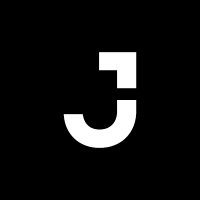
|
Jacobs Engineering Group Inc
NYSE:J
|
Professional Services
|
| US |

|
TopBuild Corp
NYSE:BLD
|
Consumer products
|
| US |
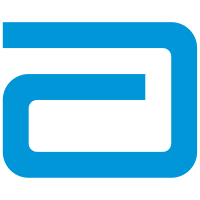
|
Abbott Laboratories
NYSE:ABT
|
Health Care
|
| US |

|
Chevron Corp
NYSE:CVX
|
Energy
|
| US |
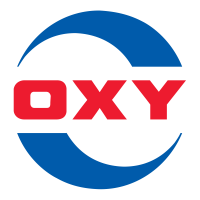
|
Occidental Petroleum Corp
NYSE:OXY
|
Energy
|
| US |
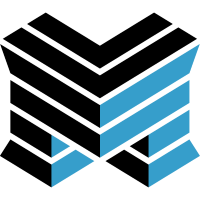
|
Matrix Service Co
NASDAQ:MTRX
|
Construction
|
| US |
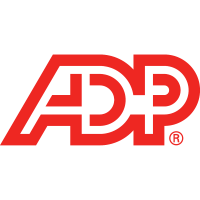
|
Automatic Data Processing Inc
NASDAQ:ADP
|
Technology
|
| US |

|
Qualcomm Inc
NASDAQ:QCOM
|
Semiconductors
|
| US |

|
Ambarella Inc
NASDAQ:AMBA
|
Semiconductors
|
Utilize notes to systematically review your investment decisions. By reflecting on past outcomes, you can discern effective strategies and identify those that underperformed. This continuous feedback loop enables you to adapt and refine your approach, optimizing for future success.
Each note serves as a learning point, offering insights into your decision-making processes. Over time, you'll accumulate a personalized database of knowledge, enhancing your ability to make informed decisions quickly and effectively.
With a comprehensive record of your investment history at your fingertips, you can compare current opportunities against past experiences. This not only bolsters your confidence but also ensures that each decision is grounded in a well-documented rationale.
Do you really want to delete this note?
This action cannot be undone.

| 52 Week Range |
3 367.85
6 214.85
|
| Price Target |
|
We'll email you a reminder when the closing price reaches INR.
Choose the stock you wish to monitor with a price alert.

|
Fubotv Inc
NYSE:FUBO
|
US |

|
Bank of America Corp
NYSE:BAC
|
US |

|
Palantir Technologies Inc
NYSE:PLTR
|
US |
|
C
|
C3.ai Inc
NYSE:AI
|
US |

|
Uber Technologies Inc
NYSE:UBER
|
US |

|
NIO Inc
NYSE:NIO
|
CN |

|
Fluor Corp
NYSE:FLR
|
US |

|
Jacobs Engineering Group Inc
NYSE:J
|
US |

|
TopBuild Corp
NYSE:BLD
|
US |

|
Abbott Laboratories
NYSE:ABT
|
US |

|
Chevron Corp
NYSE:CVX
|
US |

|
Occidental Petroleum Corp
NYSE:OXY
|
US |

|
Matrix Service Co
NASDAQ:MTRX
|
US |

|
Automatic Data Processing Inc
NASDAQ:ADP
|
US |

|
Qualcomm Inc
NASDAQ:QCOM
|
US |

|
Ambarella Inc
NASDAQ:AMBA
|
US |
This alert will be permanently deleted.
 Divi's Laboratories Ltd
Divi's Laboratories Ltd



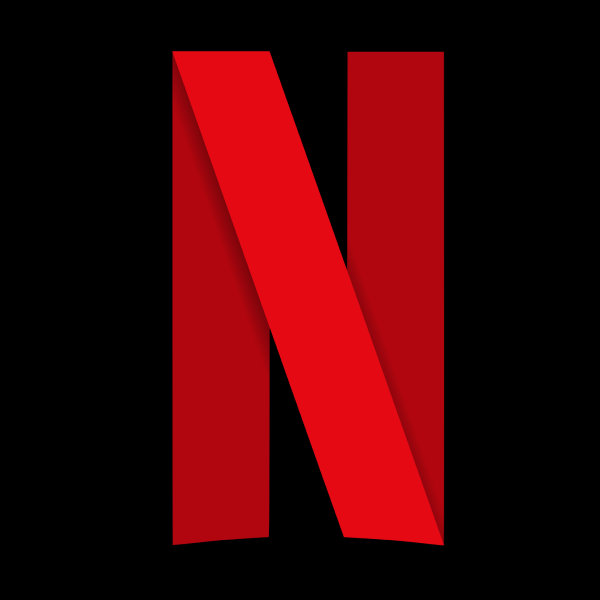

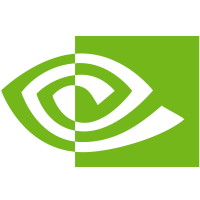
 You don't have any saved screeners yet
You don't have any saved screeners yet

Ladies and gentlemen, good day, and welcome to the Earnings Conference Call of Divi's Laboratories Limited for Q1 FY 2023. [Operator Instructions] Please note that this conference is being recorded.
I now hand the conference over to Mr. M. Satish Choudhury. Thank you, and over to you, sir.
Good afternoon to all of you. I am M. Satish Choudhury, Company Secretary and Chief Investor Relations Officer of Divi's Laboratories Limited. I welcome you all to the earnings call of the company for the quarter ended June 30, 2022. From Divi's Lab, we have with us today, Dr. Murali K. Divi, Managing Director; Ms. Nilima Prasad Divi, Whole-Time Director, Commercial; Mr. L. Kishorebabu, Chief Financial Officer; and Mr. Venkatesa Perumallu, General Manager, Finance and Accounts.
During the day, our Board has approved unaudited results for the quarter ended June 30, 2022, and we have released the same to the stock exchanges as well as updated the same in our website. Please note that this conference call is being recorded, and the transcript of the same will be made available on the website of the company. Please also note that the audio of the conference call is the copyright material of Divi's Laboratories Limited and cannot be copied, rebroadcasted or distributed in press or media without specific and written consent from the company.
Let me draw your attention to the fact that, on this call, our discussion will include certain forward-looking statements, which are predictions, projections or other estimates about future events. These estimates reflects management's current expectations of future performance of the company. Please note that these estimates involve several risks and uncertainties that could cause our actual results to differ materially from what is expressed or implied. Divi's Labs or its officials does not undertake any obligation to publicly update any forward-looking statements, whether as a result of future events or otherwise.
Now I hand over the call to Dr. Murali K. Divi, Managing Director of the company, for opening remarks. Over to you, sir.
Good afternoon, and thank you, everyone, for joining us at our Q1 FY '23 earnings call. The COVID-19 continues to pose new challenges with increased infections of new subvariants. We hope you and your family members, near and dear ones are staying safe and healthy during this difficult time. At Divi, all safety protocols are still in place to ensure the well-being of our staff, and we will continue to do the same.
Looking at the global scenario, the demand has stabilized as compared to the volatilities seen during the pandemic. However, the cost projects and logistical challenges continue to persist. Along with these, the industry is also facing pricing pressures.
Now I would like to give operational overview at Divi's Labs. Capacity expansion for commercial generic KPIs is now completed. Qualifications for pipeline products are progressing well. We have filed DMF for 3 new APIs in multiple countries. Among these 3, one is a Contrast Media API. Additionally, a few new Contrast Media APIs are currently under development. The new multipurpose facility for Custom Synthesis project is now complete and are ready to meet additional requirements for the projects under validation.
Divi's as a responsible pharmaceutical company has undertaken several CSR activities with the communities surrounding the manufacturing units, providing necessary services to 250,000 people living in the communities surrounding our facilities. Some of these initiatives include providing safe drinking water, empowering women, enhancing infrastructure, conducting health camps.
Thank you. Now I request Ms. Nilima Divi to give an operational and financial update.
Hello. Good afternoon. I welcome everyone to Divi's Labs earnings call to discuss our Q1 FY '23 results. I hope that each one of you, along with your friends and family, are safe. During the quarter, we continued to be a reliable partner by fulfilling all commitments to our customers despite raw material volatility and uncertainty, logistical challenges, energy crisis and several geopolitical tensions.
Procurement is actively being monitored to maintain certain amount of inventory based on product criticality. We have experienced price increases in raw materials as well as solvents compared to last quarter. The impact of it is felt in the cost of our key products. Some of the cost increases have been contained partially because of the long-term supplier contract and also due to our recent backward integrations.
Shipping costs and timelines have increased significantly, particularly shipments towards North and Latin America, where ocean freight increased substantially. Trade disruptions are being caused by container shortages and port congestions as a result of geopolitical tensions and shortage of manpower at the port. Our logistics team is constantly monitoring the situation and pre-planning ahead of time so that most of the shipments can be delivered on time.
We continue to be vigilant about the day-to-day developments globally and try to mitigate risks as much as possible and ensure reliable supply to our customers. Divi's is capable of capitalizing on opportunities ahead with a combination of ready resources, 30-plus years of chemistry expertise and execution excellence.
I would now brief you on the financial performance for the first quarter of the financial year 2022/'23. I would like to state that we have achieved a consolidated total revenue of INR 2,343 crores for the year, reflecting a growth of 17% over the corresponding quarter of the previous year. This is on the back of a good growth during the last financial year. Profit before tax for the quarter amounted to INR 851 crores. We earned a profit after tax of INR 702 crores during the quarter.
Our EBITDA margin for the quarter accounted to 40%. Exports for the quarter accounted to 90%. Exports to regulated markets is 74% of our total revenue. Product mix for Generics to Custom Synthesis is 47% and 53%, respectively, for the quarter. Constant currency growth for the quarter has been 9%.
Our Nutraceutical business for the quarter amounted to INR 186 crores as compared to INR 138 crores corresponding quarter of last year. We have a ForEx gain of INR 56 crores for the quarter. Assets worth INR 87 crores have been capitalized during this quarter, additionally INR 512 crores of capital work-in-progress is underway. As of 30th June, we have cash on book of INR 3,431 crores, receivables of INR 2,155 crores, and inventories of INR 2,836 crores. Thank you.
Thank you, madam. With this, we would request the moderator to open the line for Q&A.
[Operator Instructions] We have our first question from the line of Tushar Manudhane from Motilal Oswal Financial Services.
Sir, on the generic side, I'd like to understand that it's been more or less stable sales for the past 3 quarters. But with this capacity expansion now in place, so would we see the step-ups in the coming quarters or it would take some time basis process validation and then subsequent stability data?
Yes. With the generic capacity increased, we will see in generic portfolio, as we have completed some of the qualifications and with the mere expansion, we will see the increase in sales in the generic compound. Yes.
Got you, sir. Sir, any further update on Kakinada?
There is no further news on Kakinada. We are still waiting for the Andhra Pradesh government to hand over the land to us, the 500 acres.
And lastly, on the [indiscernible] sales, it has been a decent jump up compared to INR 155 crores, INR 160 crores to INR 190 crores now close to. So is this a sustainable number on the back of capacity being expanded or we have some volatility over the year?
Yes. After we expanded 100% capacity, the jump up what we have seen is, yes, it will continue. And in fact, we are expecting even business to further grow.
Got it. And just lastly, if you could share the CapEx number for this year and capital work-in-progress?
Look, the capital work-in-progress is about INR 500 crores right now. And we plan to -- in a normal circumstance, since we expanded considerably INR 2,500 crores in the last 3 years, and we occupied about 85% of the capacity. So still very large capacity is available. So we don't see more than about INR 500 crores, INR 600 crores of further capital expenditure, one, to introduce new technologies for the chemistry, which we were doing earlier, flow chemistry, [ peptides ] chemistry, which are the -- these are the new chemistries where several new products are coming, and also the high potency antibody conjugated drug.
These are the technologies that are required for the next 3, 4 years with all the molecules that are being developed. So -- but you don't need a huge investment for that. So this is what is planned between new technology and some debottlenecking required. Without Kakinada, this is what it is. But if there is a Kakinada project running, I think as I've mentioned last time, we will start with about INR 1,000 crores and probably go on investing as we go along.
We have our next question from the line of Surya Narayan Patra from PhillipCapital India Private Limited.
Sir, just first question on the margins. Sequentially, is there any major change that we have witnessed in terms of the cost structure? So the margin has corrected almost 3% to 4%. So either it is coming from the price pressure or it is an input logistic or energy costs like that or it is product mix. What really has changed from the last quarter, although quarterly variation that we are not judging, but any specific thing that has really resulted in a correction in margins?
When you say margins, we look at from the point of view of process efficiency and productivity. Productivity, it is still good, nothing, Efficiency, there's no change. What changes, as Nilima mentioned earlier, the raw material costs have gone up. All carbons have gone up anywhere from 30% to 50%. And in some of them, even 100%. And some of the metals like lithium, which we use substantially as a catalyst, it has gone maybe 100% or 200%, as the world knows. So this cost is about the increase in material cost, that's what is one impact.
The second one is the energy cost. Coal, what we were buying for around INR 6 a kilogram, we are now buying for INR 8 to INR 8.5 a kilogram. As you all know, theme is mainly being the energy consumed in the pharma industry per process, that is with, again, there is a 30% price increase and it has impacted the equity cost.
And another major factor is the power. What used to be about INR 6 a unit, we are now paying about INR 8 plus a unit and pharma industry consumes quite a bit of energy. And during the summer breaks or on a continuous run, if we have to use the generators, the cost per unit of power generation used to be around INR 30, INR 40, today it is about INR 70 to INR 80 per unit. So these are some of the things that are not in our control that has impacted this, what you have seen as either other expenses or more hedge increase or raw materials being increased. It has nothing to do with the functioning of or the efficiency of the plant.
Yes, sir. Sir, but this cost elevation was there even in the fourth quarter, right, sir? Or it has further enhanced and pressurized profitability in this current quarter?
I think we cannot go by quarter-by-quarter, because maybe we consumed some of those solvents, some of those materials more in one quarter than the other. And even in the energy, I think, with the way the first come first out first use basis, maybe some of the ones that are recently purchased gets charged on that basis.
Sure, sir. Sir, my second question is that, on the revenue front, we have maintained even strong performance despite whatever challenges, trade issues and all that. So I'm just trying to understand here whether we are still getting benefited by the limited period supply opportunity, could be like molnupiravir and [ Taxovidar ] anything like that this quarter? And if that is a case, what is -- or whether this is a revenue quarterly run rate is a sustainable one in [ therapies ]?
I think one thing I want to bring out, I have been saying from the beginning that it's not a single product that's on the company. It's not just the custom synthesis or the generic compound, it's a combination. What we established, normally I don't even say the name of the compound since the big pharma announced the name of the compound, what became very clear to the every pharma big company in the world is that, if there is an NCE, if there is a large volume required, a company like Divi's can do from NCE to launch commercial supply between 6 months and meet the whole world demand. That is what we have established in the world, which nobody has done in the past. So we are looking at a lot of opportunities based on this credibility that came into the world by which every big pharma understood that if there is a small molecule needing large volumes, let us go to Divi's 6 months, we can go to the launch. This is what we gave.
Now coming back to molnupiravir, yes, we had enjoyed the run, and we have completed all the orders which we have received, and we are waiting and discussing further orders.
Sure, sir. Sir, just one point I wanted to clarify about, let's say, the 6-point growth strategy or drivers that you have been talking about. So having created the full capacity additions, or I mean having created the major capacities for both custom synthesis as well as generics. So out of those 6 drivers, which are the drivers that you think is likely to be the key contributor over current year and next year?
I love all the growth engines because some of the growth engines give me a lot of stability, some of the growth engines grow like rockets. You want to gear them, but I love the stable growth engines also. Coming back to, I think, your point, the contrast media growth engine where we already increased the capacity for some of the contrast media and we have filed as much required, we are stabilizing the process and completing qualifications of other contrast medias. I think that is a big growth engine which I can see in the coming 2 years. And this is where we are going to be very strong with the recovery and reuse system with the least consumption to the atom efficiency. Because I didn't -- won't used to be cutting down the kilos, today it's about $80 per a kilogram, and there is the major cost in the consumption of the contrast media.
So if somebody has a good efficient block salt recovering, reusing, he will become the king in the game. And also, I think we have an excellent opportunity in one of the growth engine where I mentioned that one of the contrast media but one big pharma, which I have mentioned earlier that we have got the contracts and we will be completing. So we have completed -- we are just in the process of completing validation and commercial products and continues up that without any gap. And now we are into discussion to see -- there may be an upside of 2x. That's what we have seen. I think these are the 2 main if you want the rockets that can take off, but the real growth is on the future.
Our last growth engine where we mentioned that the expiry uptake in between 2023 to 2025, about $20 million worth of APIs going out of patents. This is where we have submitted DMF in some countries and other DMFs are under preparation as we are completing the process validations. And these are the ones what we'll do after the 2 years to take the company further up.
Sure, sir. Just last one quick clarification, sir. For FY '22, the export mix, if I see, the U.S. sales of export has gone up from the, let's say, from the 24% to 44%. And the Europe, which used to be the dominant piece with 47% until last year, it has come down to 33%. So is there anything to read out of these numbers, sir?
I don't think you can make out anything from these numbers because the big pharma generic industry usually, probably you can calculate based on where it is going. But the big pharma, they may want it to be shipped in Europe or they now want it to be shipped to U.S. or into the Singapore, it's very difficult to say, dip up and down. It mainly depends on where they have formulation capacity available for running the set project. So I think it will not make any really understanding to bring any point out of export to Europe, U.S. or any other country to see what happened to each company or each product.
We have a next question from the line of Shyam Srinivasan from Goldman Sachs.
Just the first question around the segmental disclosures of generic versus custom and what the generic API growth? And I'm excluding nutraceuticals out of it. So it seems to suggest that generic API has now shown 4% growth for the quarter Y-o-Y. I think we saw recollect rate 15% decline in generic API last year, same revenue line item I'm comparing. So what's the prognosis, Dr. Murali and team. You mentioned about long-term contracts and the ability maybe to reprice. So just going back to the point on margins, are we able to pass on price hikes selectively for some of these products so that we can protect margins? I think that's the first question.
I think from last several Q&A, when the question for us, why the custom synthesis is going up, generic be going down, generic going up, customs going down, we don't run that game.
As I mentioned that we cannot be judged by quarter-on-quarter, even on year-on-year because opportunities sometimes lump up, sometimes they're spread. But our objective is to keep them balanced on 50-50 because of the large custom synthesis project we did there, probably the numbers changed a little bit up and down. Otherwise, coming to the costs, I think, yes, in some cases, we were able to convince the customers and talk on some of the raw material costs because everybody knows the lithium that it's not available in the world, even it's not available for the kids.
So pharma industry is not exempted from that. So people understand and compensate for that. For some of the solvents consumed, I think it takes a little more time to convince them. So long-term contracts with the coupon saying that, if there is a more than 10% increase, maybe it can be discussed and accommodate, I guess we are able to do that. But I think the more of these increases happened in the last 3 to 6 months than really a year ago. So still we are under negotiations for further.
Got it, sir. My second question is just, again, disclosure of some of your fiscal '22 annual report on top products and top customers. So we have seen a significant jump. So 49% of products going to 60%, top 5 customers, 34 going to 54. So is there any concentration risk? I know maybe molnupiravir is one which obviously has pushed up numbers like you said, but how should we look about it? Are we having other drivers to kind of again go back to a more diversified revenue growth going forward?
I think, going forward, it will be more diversified and I think we'll go back to the way we used to be. But -- and again, these 6 growth engines, what we are concentrating, leaving the first growth engine in the regular generics, I think this will bring the stability, not to depend on just one product or 5 products. This will bring the ability because each of the growth engine has several products.
Got it, sir. And my last question is just again on the similar disclosure around imports and how much of it you're dependent from a material consumption perspective. This has reversed in the fiscal '22, right? We have gone from 44% to 46%. So just trying to see backward integration, we did quite a bit. And I was under the impression that this number should keep coming down, and as you do in more and more of the intermediate steps. But has it changed or it's just temporary you think?
So if you are looking at the imports, it's mostly like it's a situation where what's happening in the world currently today, it could be with respect to the geopolitical tensions or it could be the logistical challenges, like even if you see from India to U.S., 40-foot container is currently like $11,000, which is 3x what it used to be a year back. So there are many factors that are playing with respect to why the prices are increasing and what's the cost. Yes, we did try to reduce our dependency on imports, mainly China, from about 7 years back wherein we started encouraging domestic manufacturers to produce materials which are like where China is a monopoly. And wherever we could not find a secondary source with respect to geographical diversification, we did our own backward integration.
But having said that, the dependency on China is not totally gone, because they have the largest capacities in basic chemicals in the industry. But if we are looking at the increase in the cost, it's, I believe and I hope, that it's going to be a temporary thing, and it's not going to be permanent. And once the situation settles in various factors worldwide, be it logistical or geopolitical tensions, I think the costs would go back to where they were.
We have a next question from the line of Cyndrella Thomas Carvalho from JM Financial.
Dr. Divi, if we understand our growth coming back on the generic side, plus you highlighted that on the contrast media opportunity also. So should we see this 870-odd run rate quarterly improving here onwards? And how should we look at the generic pricing perspective for our portfolio, existing and the upcoming launches? And if you could also bring up what kind of CapEx we will see getting utilized for these newer generic opportunities that we are launching.
The newer generic launch is going to bring a change because it's not going to occupy a lot of capacity. The newer generics are high-priced, not like [ $35 ] a kilo, but they are high priced and medium volume. So this will occupy less capacity and produce probably more value. But I think it's good to have a combination of our contrast media or these new generics and also multiple short-terms. I think let's not forget that people still did not forget about the nitrosamine impurities. People didn't still did not forget about azido impurities that came in Sartan. Even I think yesterday, we came to know that the Sartan still is the newer ones, some of the old generics may have again problem and probably we will have more opportunities for producing more sartans as we already are commercializing them. So I don't -- I expect that these unstable times of higher raw materials are a little bit effect on the margin is going to be temporary, and we should be able to go back to where we were in the next 1, 2 years.
And for this generic run rate of 870-odd should be improving as we go from this quarter onwards for the entire year?
We cannot -- I have been saying from the beginning, we don't want to say quarter-on-quarter basis. We can talk about -- I think I mentioned a few times in this call that it is going to be once we complete all these validations, I think even in the generics and future generics, next 2 years -- after 1 year, in the next 2 years, we should be able to see the upside and the valuation. Otherwise, our regular generics are stable. And whatever capacity we have, we are able to utilize.
And the amount of new capacity utilization for the entire newer generic, how much CapEx we will be kind of utilizing, which we have already done in past, like almost INR 3,500 crores in the last 3 years?
If you recall that before we invested this INR 2,500 crores, we were having a revenue of INR 5,000 crores and with a profit after tax of INR 1,300 crores. In the last 3 years, we were able to complete that and bring it to the INR 9,000 crores of revenue and INR 2,960 crores of profit after tax. So the substantial increase in these, both in terms of the sales as well as in terms of the margin, shows that we can quickly recover our revenue investment. And I think, going forward, the INR 500 crores of what we have capital work-in-progress and what I mentioned an additional INR 500 crores of investment should sit through, I think, the holistic growth engines what we have identified.
Is there any one-off in the other expenses, which look very elevated for this quarter?
There is no one-off in this quarter rather than whatever -- the fast-track project has contributed in the last 1.5 years.
Sir, should we assume at least above 40% EBITDA margin sustainable for FY '23?
Always we should be able to maintain the 40% EBITDA margin, yes. I think we'd like to do better, but I think it is up to 40%.
We have a next question from the line of Prakash Agarwal from Axis Capital.
Just one clarification from earlier participants. So 40%, including other income, I guess, because I think this quarter, it was 37.6%. Will that be correct, sir?
Yes.
Okay. Perfect. So question, just trying to understand the changing dynamics, as you said in opening remarks, the cost and the freight and input costs have been increasing. Trying to understand this better. So is this the phenomena we are seeing now where we contracted at lower rates and we did not see the ping in the last 2, 3 quarters. Just trying to understand this better.
Can you please repeat the question again?
Ma'am, just trying to understand that, have you contracted with newer rates or higher input cost. So I understand is actually coming down Q-on-Q. I mean, so in the last few quarters, if we have contracted at lower rates, and now we are having higher rates for future contracts. If you could just highlight that? Because the commentary that we are hearing from other pharma companies that Q-on-Q, at least the input cost as well as the freights are coming -- started to come down. And in the past, we haven't heard from you where you contracted at lower rates in the past and now at higher rates?
So in the past, we have been like able to get the prices into a contract, or we've been playing safe or we have stopped the material quite a bit wherever necessary. So the costing was like slightly better. But yes, if I say currently sitting in August, the costs are -- we are seeing a little bit better, but still volatile, I wouldn't say they're completely back to square one like how they were 2 years back. But yes, they are still volatile. But yes, we are seeing in August, slight better pricing. But if I'm talking about Q1, we did see quite a price rise around that time.
Okay. Fair enough. And secondly, you mentioned that this passing of cost is on a case-to-case basis. How about the benefits? So rupee-dollar from INR 77, INR 78 is touching INR 80 now. You have talked about it that part of it gets passed on or part of it be absorbed. So does that still hold? Or how are we placed now with the rupee dollar benefits?
So if you have to look at, we do a lot of imports in dollars as well. So when the price goes up for the dollar, we also pay a higher price.
Yes, yes, naturally that is fine, the exposure I'm talking about.
Yes.
So we get the benefit of the post the net exposure?
That's correct.
Okay. Great. And lastly, given the investments we have done in the past and generics even you mentioned that there is a [ rating clips ] which will benefit the generic production and sales. So we have started to see some growth now 5%. How do we see '23 and '24, given that capacity utilization is here to increase, DMF filings already happening. So just a little color would really help us understand on the growth trajectory for the generic business.
See, the capacity is there. The validations are happening. The Drug Master Files submissions are happening. Once we complete these in the next 6 months to 1 year, this is on the qualification by each of the customer happens and then the trial audits and the annual contracts. This is a process which we started 1 year ago, 2 years ago, to develop the process for them. Nobody is happening, and you will see the real volume after the 2 years. But meanwhile, you will definitely see some income. Some of them approvals come early and some of them will take a little time of 1, 2 years, yes. But we have the capacity for all of those.
Understood. So this is 1 to 2 years away and you are saying near-term, we will still see some growth?
Can you please repeat?
So what I understood for these complex products, which are heading for patent expiry, we will see in a couple of years. And in the meantime, the base business generics will still see some growth. Would that be correct understanding?
Last quarter engines where the work was going on as well as, and then we have our regular business, which is happening as well. So yes, growth, I would say, is something we can't see quarter-on-quarter. It is something that we would see year-on-year.
What I can also add to what Nilima said that because what I meant to you just now the new products where patents are going to be expired, that is the one business. The second one is, the 3 other growth engines, the contrast media growth engines and sartans and where we increased its capacity of some of these generics, these will start yielding as and when the qualifications are complete without waiting for the patent expiry, because these 3 are already taken [indiscernible], these 3 growth engines.
We have a next question from the line of Neha Manpuria from Bank of America.
Nilima, just wanted to understand the comment that you made that costs have started to come down in August. Has there been a meaningful reduction? And what is your sense in terms of raw material cost improving further? Do you think there could be more improvement as we go next?
As I said, while I said like we are seeing a little cost reduction or stability, we are also seeing volatility, mainly with respect to solvents and where all the solvents are being used. So it is quite difficult because we are just at the beginning stages currently to decide upon whether this is going to be the trend for the entire quarter. It could be that tomorrow there could be another delay or there could be some hiccup that could have happened, and the prices would again shoot up.
So right now, what we are trying to do is, we are trying to be cautious. We are trying to take advantage of the situation whenever there is a slight dip in the prices and trying to take advantage of the situation whenever there is a logistical ease. And the main goal we have currently is to make sure there is no delay to the customer. Whether we have a delay or we have a cost increase is the secondary worry for us. Our primary worry is, are we supplying to the customer on time, on demand. And that we are able to fulfill and that's what our main target is.
Understood. And from a backward integration aspect, given that we've invested a [ fair bit ], all of that benefit is already reflected in our costs, right? Or should we see some incremental benefit or offset coming from the backward integration project?
The backbone integration benefit has already come in. But what we are trying to see is now that some of these solvents, like tetra hydrofuran and acetonitrile and few solvents where the prices went up very high, where moisture content is very, very critical, we are able to apply some new technologies now, membrane technologies, to see how to recover them and reuse them, which we were not doing 1 year ago or 2 years ago. So they would bring some benefit, yes. But I think, as Nilima said, the main thing is, what this volatility of demand and supply or somebody is just tapping production in China or elsewhere, Russia-Ukraine impacting all of a sudden increases. I think this is where we cannot comment too much.
Understood, sir. And my last question, sir, I'm not sure if you touched upon this, but any update on the Krishnapatnam project?
We are planning to take up the project in Kakinada. I think then -- after completing Kakinada plant, we'll take up the Krishnapatnam project.
We have a next question from the line of Rahul Jeewani from IIFL.
Sir, one of your key custom synthesis products is expected to lose patent protection early next year. So can you please help us understand when your custom synthesis products lose patent protection, how much of the profitability loss in such products you are able to offset by ramping up volumes on the generic API side?
It is not that patent expiry that we lose all the products and we lose profitability, it is not true. Because the patent holder, instead of 100, his demand may be 70 or 80, but he always try to give us more products. We have to look from that angle. Still we'll enjoy the premium price, and the prices change from when you supply, let us say, 100 tons or 500 tons, 100 tons your price is much higher, he will utilize much better profitability.
So even after patent expiry, none of the big pharmas lost total market to [indiscernible] industry. There are compounds where they are retaining 90% of the demand still because of certain impurity profiles, which are very critical where the generics industry may take time to achieve that. So even after patent expiry, we are talking about a few years, especially if you take in [ Europe ], the medicines that are used in the neurological, people do not want to change the brand. They want their patients to use the same brand. So we have not seen a certain disappearance of the product or sudden loss of majority of the value. Yes, there will be some loss, but all these big pharmas had more new products, that's how the balance will come.
Sure, sir. But typically, what we see is that once products go off-patent in the U.S. market, generic companies would capture around 85%, 90% market share in some of these plain vanilla or solid products. So would you think that, that could have an impact on our profitability for some of these products? And after the patent expiry, do we have to revise pricing which we charge to the innovator company or the pricing remains the same as we supply pre-patent expiry?
Pricing is based on a contract what we have for the next 5 years or 10 years, number one. Two, the cost of API in a big pharma dosage form is not like generic compound. So they need not -- they do command premiums, and we do get premium, number two. Three, we look at a basket of products and adding more number of new products into the basket. I don't know what you are referring to a single product, which can impact or lose a lot of value, I don't recall that we have said product.
Sure, sir. And sir, my second question, obviously I know you haven't been indicating the quantum of revenue contribution from some of these COVID-related products. But if you can just directionally tell us how your base custom synthesis would have grown on either a year-on-year basis or a quarter-on-quarter basis this quarter? Is it of any one-off COVID-related opportunities?
See, in the COVID-related opportunities, as you know, we started developing several products in the last 3, 4 years. And several of them, the demand, either the sell-down was not there, no more than a few months. So I think slowly we stopped all of them, [indiscernible] and several other compounds. But what we would like to say is that what we established is that from discovery for a new molecule for an NCE in Phase 2, we can bring it to the scale up and supply commercial volumes with all regulatory clearances within 6 months. This is the [ number I heard of ], and we have done it. This is what big pharmas all of them recognize and I think this is where we are looking at opportunities to manufacture large volumes with the capacity what we have. So what happened is, none of the big pharmas have any manufacturing capacities of API. There are very little API capacity. So if there is a molecule of large volume and of this kind of COVID or non-COVID product, they need to outsource. And if they want to launch quickly, I think they are looking at -- we will have more opportunity than others as we have proven track record.
We have our next question from the line of Hardick Bora from Union AMC.
Sir, just a question on the gross block turnover. Before we embarked on this CapEx from financial year '20 to '22, which we have also utilized well over the year, before that period, we used to, on average, we generate 1.7 to 1.8x revenue on a gross block for the year. Can we expect this kind of a ratio [ asset on ] efficiency to continue into the future?
See, I am optimistic, number one, and I'm an optimist. Number two, yes, technologies may permit you to do that. Three, what works again as that, number one, things like COVID where we have to more precaution and more delays in operations. Number three, and more on the regulatory clearance, the quality assurance, quality control, having several restrictions on how the manufacturing should be conducted. There's a large difference between the way we used to conduct manufacturing in 2010, 2015 and now. So we bring more productivity by increasing process yields and process efficiency. But the quality, or quality assurance with new regulations or regulations from the regulatory bodies keep obstacles, whereby we have to wait until step 1 is totally complete and live before we do step 2. So it's a game between quality assurance and production.
Okay, sir. But as we keep improving upon the efficiency in the system, we have seen that, let's say, over the decade, more than a decade, the company's efficiency on turnover has increased. We have been able to better utilize our gross [ growth ].So this improvement is supposed to expected to continue into the future. That's what I wanted to check.
Yes. If we don't get any more new regulatory agencies coming with some new guidelines, probably we should, yes.
Okay. Sir, and one more clarification, last quarter's call, you had indicated that about 80% to 85% of the capacity is utilized, and we have scope for adding another 10%, 15%. And this was not including the 2 new buildings. Can you tell us, including those 2 new buildings, how much is the capacity available for growth?
I think I mentioned that 83% is right now occupied. So we have still 23% available -- 83%, there is about 17% available right now. And 17% on the huge volume, that means we can accommodate lot of products or a lot of projects.
But this does not include the 2 new [ HSA ] buildings that are coming up, right?
It does not include the 2 new buildings or semi-construction and coming up, yes. Okay.
Is it possible to indicate with those 2 coming up, how much more capacity [indiscernible]?
See, since they are in the under-implementation waiting for project, if we install large volume reactors, then it's different from medium volume equipment. So it depends upon the projects online where we needed to increase the capacity. We may go back to -- we may go to the 20% capacity, if I have to say some number from the [ company ].
We will take an update from you again. As those businesses start coming in, we'll take an update.
Ladies and gentlemen, due to time constraints, that was the last question. I now hand over the conference to Mr. Satish Choudhury for closing comments. Over to you, sir.
Thank you all for joining us today for the earnings call of Divi's Laboratories Limited. In case you need any further clarification, please reach out to our Investor Relations. Thank you.
On behalf of Divi's Laboratories Limited, that concludes this conference. Thank you for joining us, and you may now disconnect your lines.